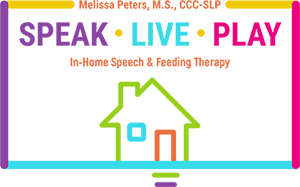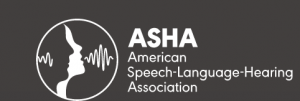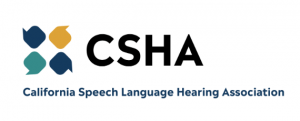Auditory Processing Disorder (APD)
Auditory processing disorder (APD) is a term that refers to difficulties in how the brain understands speech. While the sound can be loud and clear, people with this condition may not understand what they hear the same way as others. Their ears and brain do not coordinate fully. There is some interference in how the brain recognizes and interprets sounds.
Kids with APD usually have difficulty hearing slight differences in a speech. For example, when a teacher says, “Please raise your hand,” the kid may hear something like, “please haze your plan.” When you tell your kid, “Look at these goats grazing over here,” and hear something like, “Look at these gowns gliding on the chair.”
People suffering from APD can lead an everyday life with the right strategies. However, similar to any other disease, early diagnosis is crucial. When the condition is identified and managed early, the kid can avoid the listening and learning problems at home and school.
Trouble Understanding Speech
Researchers think that people with APD usually sense sound and hear sounds that are delivered one at a time in a quiet environment. The main problem is that they cannot distinguish the slight changes between sounds in words. The individual may have a more challenging time understanding the speech, especially in poor listening situations, with too much background, or in reverberant rooms such as auditoriums. Patients with central auditory processing disorder can also have difficulties understanding speech in noisy places such as playgrounds, parties, classrooms, or sports events.
What Are the Auditory Processing Disorder Symptoms?
Auditory processing disorder is often mistaken for other disorders because many symptoms are similar. Additionally, other conditions such as learning disabilities, speech-language delays, depression, and ADHD may hide the auditory processing disorder symptoms. While auditory attention problems, memory deficits, and sound sensitivity are not part of the auditory processing disorder symptoms, they cause problems when using sound information appropriately. APD symptoms range from mild to severe and take various forms. Below are the main signs and symptoms of this disorder.
- Difficulties in following spoken directions, especially those that involve several steps
- Problem following a conversation, especially in places with lots of background noise or multiple speakers
- Often asking the person to repeat the conversation or saying “What? “or “Huh?” multiple times.
- Difficulties remembering details of things that you read or heard from someone else
- Difficulties in reading or spelling words that require sound processing
- Easy distraction from sudden loud noises or too much background noise
- Problem locating the source of speech/sound
- Taking a long time to respond when spoken to
Central Auditory Processing Disorder Causes
The exact cause of APD remains unknown: however, research shows that auditory processing disorder in adults and kids is linked to the following;
- Illnesses such as chronic ear infections, lead poisoning, or meningitis. Individuals suffering from nervous system diseases such as multiple sclerosis are also at a high risk of developing APD.
- Low weight or premature birth
- Injuries to the head
- People with a family history of APD have a high chance of developing the condition.
Diagnosing auditory processing disorder
Central auditory processing disorder is a complex subject, and experts in the field do not always agree that this disorder is on its own. When diagnosing the condition, the first step is to rule out hearing loss. After ruling out hearing impairment, the healthcare provider will refer the patient to audiologists. These specialists perform various advanced listening tests to see how the kids respond to different sounds. Some of the typical listening tests include;
Auditory figure-ground
The test is done on a patient with a problem understanding speech, especially when there is ambient background noise or speech babble. A loosely structured and noisy environment can lead to many problems for people with APD.
Auditory closure
When the patient cannot fill in the gaps of speech, especially when the speech becomes more challenging, the problem arises in a quiet environment, but the speaker’s voice becomes too fast or muffled, making it hard for the kid to make sense of the words and sounds.
Dichotic listening
The audiologist will perform the dichotic listening test if the kid has difficulties understanding competing and meaningful speech coinciding. For example, when a teacher is teaching on one side and another kid speaks from behind, the kid with APD cannot understand the speech of one or both speakers.
Temporal processing
Temporal processing is the timing of our processing system that enables us to know the differences in speech sounds. It also assists in letting us understand the intonation and pitch of speech, for instance, giving a command instead of asking a question. The processing also enables us to understand humor, riddles and making inferences.
Binaural interaction
Binaural interaction lets a person know the side of the sounds or speech coming from, enabling them to localize a sound in a room. The problem is less common and often develops in people with a history of seizure disorders or brain trauma.
Traditional APD tests require the kids to reach the age of 7 years, meaning kids are diagnosed when they reach their first grade or later. However, today we have a new electrophysiology test that utilizes noninvasive electrodes to check the body’s response to speech. These advanced tests can offer early information about the central auditory system in children less than seven years.
How is auditory processing disorder treated?
Auditory processing disorder treatment is customized to meet the individual needs depending on the evaluation done during the diagnostic process. The treatments focus on addressing the following:
- Assist the patient in learning how to process the sounds better
- Teach new skills that help compensate for the APD
- Assisting in making changes to the working or learning environment and how to manage your condition better
Auditory training
Auditory training is the primary component for treating APD. The training aims at helping the patient to analyze the sounds better. Auditory training is performed one in one session with a therapist or online. Some of the exercises involved in the training include;
- Identification of the differences in sound patterns
- Focusing on a specific sound and locking out the background noise
- Determining the source of the sound
Compensatory strategies
These strategies focus on strengthening your memory, problem-solving skills, and attention to assist you in managing the sensory processing disorder. During the training, your therapy can focus on the following strategies.
- Prediction of potential elements of a message or conversation
- Use of visual aids in helping organize the information
- Incorporation of memory techniques such as mnemonic devices
- Learning techniques like active listening
Changes to your environment
Changing your surroundings can help in managing the central auditory processing disorder. Examples of environmental changes that you can effectively include:
- Making furnishing adjustments to a room to reduce noise, such as the use of carpets in place of hard floors
- Avoid using things such as radios, TVs, fans, and other items that generate background noises.
- Staying close to the sound source in scenarios where communication is crucial such as in classrooms or business meetings
- Incorporation of OD assistive technology such as personal frequency modulated systems that involve the use of a microphone and receiver in delivering sound directly from the source to your ears
- Use of visual aids instead of speaking alone
How Can Caregivers/Parents and Teachers Help People With APD
The auditory system develops fully when a person attains the age of fourteen years. Most kids diagnosed with auditory processing problems can develop better listening skills over time as their auditory system continues to grow. Although there is no exact cure for the problem, various strategies can assist with listening and boost the development of the auditory pathway over time. The strategies are more effective when adopted early.
- Physical accommodations to help improve the listening environment
- Speech-language therapy to cater to language deficits
- Individual therapies
- Counseling to help with anxiety or depression
- Occupation therapy to assist with auditory timing concerns or sensory issues
- Music or art therapy to build self-esteem
When it comes to physical accommodations, they focus on how to optimize the patient’s access to speech. The optimization includes reduction of interference of things such as background babble, poor room acoustics, and sound and sight distraction. For example, the speaker can slow down their speech or speak clearly and sit the person in a position where they can hear and see them better.
Individual therapy can also assist in improving the growth of the auditory pathway. The therapy strategies are recommended by the audiologist based on the individual tests and concerns. Today we have computer-assisted programs geared towards solving auditory processing disorders in adults by enabling the brain to perform better when processing sounds in noisy backgrounds.
At Home
The following strategies can help individuals suffering from APD cope with the condition and live more comfortably.
- Reduction of the background noise to minimum levels
- Looking at the person when speaking will help them visual clues to fill in the gaps in case they miss some speech information.
- Using a chunking strategy enables you to give the person simple verbal direction with fewer words, a keyword to remember, and a few steps.
- Reduction of the speech rate and ensuring that the voice is clear. While speaking in a loud voice can help, ensure that your speech is clear and concise.
- Inspire a person to speak out for themselves. When children have trouble listening, telling adults might be helpful. The use of visual cue cards or other signs for coaches, parents, and instructors may be necessary for shy children.
- Ask the person to repeat the instructions to ensure they know what is expected of them.
- The use of closed captions on TV and computer programs can also assist patients with APD.
- The most crucial thing is to reassure your youngster that they have nothing to be embarrassed about. Everybody learns differently. Be tolerant. Your youngster finds this challenging, and it takes time. Your child needs your love, patience, and understanding as they strive for achievement.
- When you want to give directions for tasks to complete later, write notes and keep a chore list using visual symbol calendars.
Conclusion
When it comes to Auditory Processing, finding the right intervention can make a world of difference. That’s where Speak Live Play comes in. As experienced therapists specializing in Auditory Processing, we’re dedicated to helping individuals navigate their challenges and unlock their full potential.
Our tailored strategies empower individuals to become active participants in their learning, communication, and social interactions. Whether at school or work, our techniques are designed to foster effective communication and improve overall quality of life.
If you or someone you know is struggling with Auditory Processing, don’t wait to take action. Contact Speak Live Play today and take the first step towards a brighter, more connected future.




